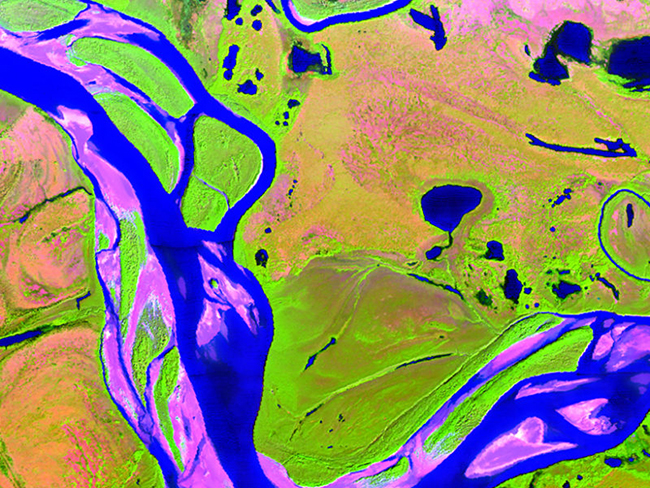Watching Earth’s Interconnected Systems at Work - EOS.org
Surface Biology and Geology, a new NASA Earth observation effort, is developing a path forward for monitoring the Earth system from space.

This false-color composite image of the landscape near Noatak, Alaska, shows three out of 425 spectral bands from NASA’s Airborne Visible-Infrared Imaging Spectrometer–Next Generation (AVIRIS-NG). NASA’s Surface Biology and Geology study is developing methods and applications to advance the use of remote sensing data like these for societal and scientific purposes. Credit: Fabian D. Schneider; data: NASA JPL, AVIRIS-NG
Space-based Earth observations are critical in advancing both our fundamental understanding of how the planet operates and our ability to monitor, predict, and respond to changes on short and long timescales. To prioritize Earth observation needs for the next decade, the National Academy of Sciences developed a short list of high-priority observing systems called “designated observables” according to the 2017 decadal survey for Earth observation from space, the most recent survey. One of the designated observables is Surface Biology and Geology (SBG), which addresses critical scientific questions and topics with respect to ecology and biodiversity (terrestrial and aquatic), hydrology, physical geography, solid Earth science, and societally beneficial applications relevant to each of these areas..... Read More